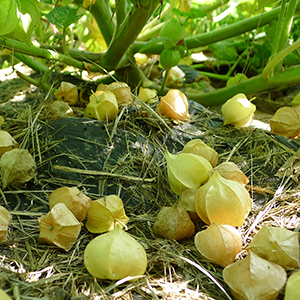
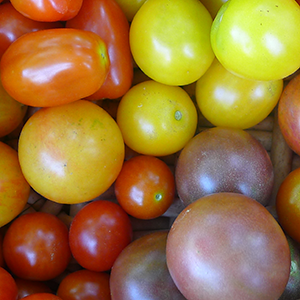
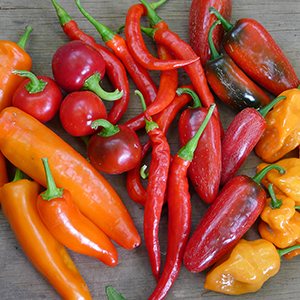

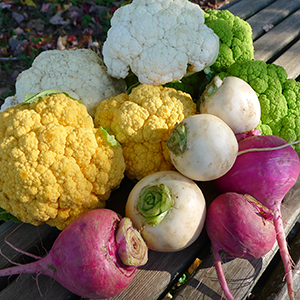
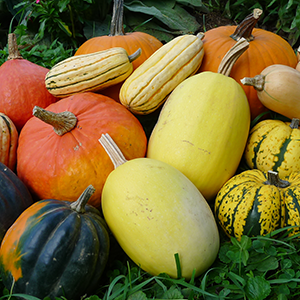
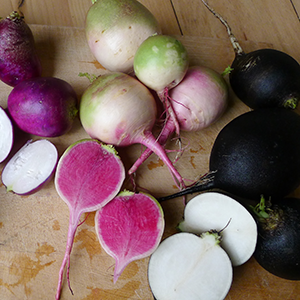



News and Notes | The Anchor Run Blog
Displaying a Single Post |
Show Recent Posts
November 19, 2017
A Balancing Act
By Derek McGeehan
A Balancing Act
By Derek McGeehan
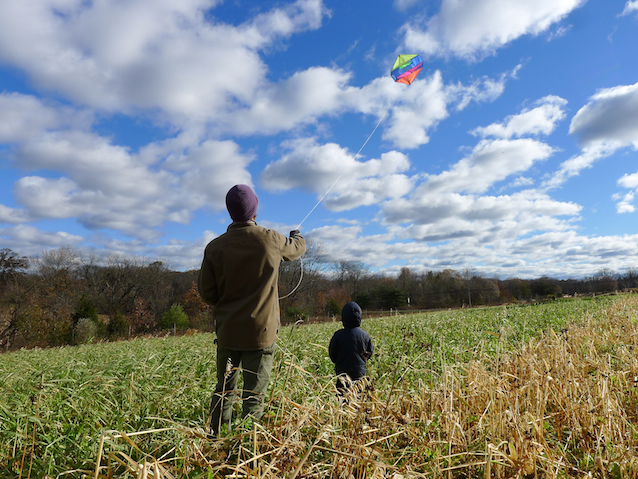
Almost too windy to fly a kite but a beautiful fall day overall!
Because we had the extreme cold of a winter night in early November our focus of late has turned towards our crops growing inside our four protective structures. Outside, many of our field crops received enough damage to render them unharvestable. Outside crops that are still worthy of our attention include cabbage, radicchio, kale, collards, hakurei turnips, scarlett queen turnips, and a few others. Besides these we may eventually be able to choosily pick some spinach and arugula, but for now we'll rely on some of the hardier greens.
Inside and protected crops include arugula, kale, spinach, mizuna, red mizuna, tatsoi, lettuce mix, claytonia (salad green), and a few special others. There are several successions of many of these crops but unfortunately the earliest our first planting will be ready is Late Fall week #3/early December. Based on our experience from past seasons we typically don't need to rely on the indoor crops until December and plan for such. Planting dates are coordinated based on when we want to harvest.
It's a tough balancing act this time of year, maintaining appropriate day and night temperatures inside, trying to train the crops to become accustomed to low temperatures while also encouraging them to grow fast enough for harvest. Warmth and light speeds growth, but too much warmth and growth will make them more susceptible to extreme cold (which happened to the outside crops). With outer layers of plastic plus inner layers of row cover our indoor crops are not frequently subjected to extreme cold, but we do expect to have a few nights in the single digits outside this winter and we do want them to tolerate lows in the 20s inside their nests. So, with fluctuating temperatures means opening and closing (venting) the buildings, mostly manually. Our greenhouse is the only structure with automated temperature controlled settings, but with an exhaust fan that currently doesn't open its own shutter properly, it means we need to manually open the door on sunny days. All of the other structures have doors, too, plus roll-up or drop-down sides for ventilation along the entire length on both sides.
Also in consideration are moisture and humidity inside these buildings. Both can contribute to mildews which can be detrimental to crop health. Venting for this reason occasionally is required. But, we don't want the crops to dry out too much either since that also makes them more susceptible to the cold. And, to grow, they need water, which we have to add through drip tape, since they're protected from the outside elements.
Thus, we strive to find the appropriate balance between factors we can control and we are thankful we have the ability to control the factors just enough to ensure decent yields of greens through the winter. At least that is our goal. Thank you for your support.
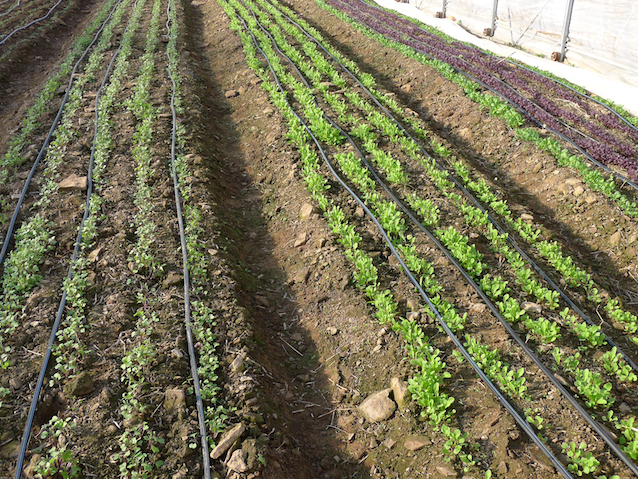
Drip tape on the first round of greens in the high tunnel: red russian kale, arugula, red mizuna, and tatsoi.

POSTS BY TYPE
POSTS BY MONTH

